
Home Search Gallery How-To Books Links Workshops About Contact
Canon 40D Color and Contrast Adjustments
© 2007 KenRockwell.com
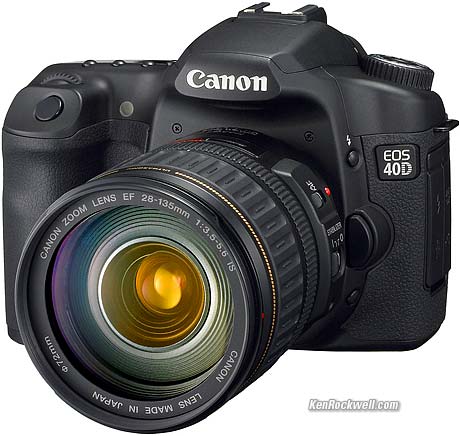
Canon 40D. enlarge.
I got my 40D from Adorama. I also use use Ritz and Amazon, and it helps me to keep adding to this site when you get yours from these links, too.
Back to Canon 40D review
More Canon Reviews
Color and Contrast Adjustment Ranges
Ask anyone with an MFA (Master of Fine Art) degree or even a couple of basic painting and drawing classes, and they'll tell you the two most critical technical aspects of any image are tone (light, dark and contrast) and then color.
These are critical to every image. If you can't get these right, you may as well forget it.
If you want to impress people in some camera club, or some vacuous online forum, then go ahead and worry about noise, resolution and sharpness. If you want to create and sell images that move people and the world, and get you a show at MoMA, The Frick or The Whitney, you need to worry more about color and tone.
The most significant technical aspects to any camera's look are its color and contrast adjustments, as well as its overall design. Early digital cameras, like my 2002 Nikon D1H ($4,500) were awful because they couldn't handle highlights over about zone VII.
The most important aspect to any camera's image quality is whether or not you can adjust it to get your desired look from it. In film days we chose our films to get our looks, and today we have to program them into our cameras. If your camera adjusts as you like it, great. If not, you need a different camera.
The Canon 40D is similar to my 5D and Rebel XTi, which are similar to the 30D. All have a wide adjustment range of -4 to +4 for contrast and saturation. I usually leave contrast alone and bump saturation to +3. I rarely reduce contrast, but do set it to -1 for baby photos under studio strobes. I may bump saturation to +4 saturation if I'm in a silly mood. I prefer this to my Nikons (pre D300 and pre D3), which only go to the equivalent of +2 to -2.
Today's Canons have a broader range of adjustment, but also have the potential for making ugly results. Nikon don't yet share this range (I haven't used the D300 or D3 yet), but also can't be screwed up too bad even if you try.
The older Rebel XT and 20D only went to +-2 for these adjustments.
I leave the sharpening adjustment alone. Likewise, I also leave the hue adjustment alone.
Here are just a few examples of a normal daylight scene at the ends of each adjustment range. There are three more levels (1, 2 and 3) between each image that I'm not showing. Adjusting only these two parameters, the 40D, 30D, Rebel XTi and 5D can give 81 (9 x 9) different combinations.
 |
 |
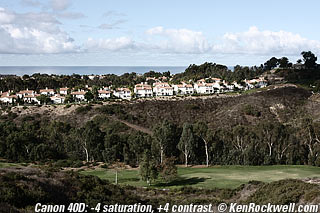 |
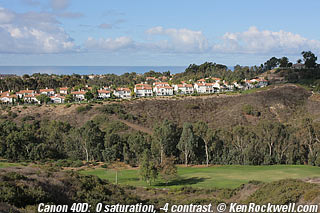 |
 |
 |
 |
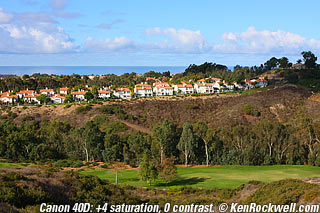 |
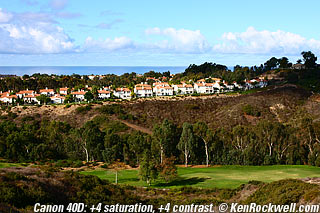 |
Canon 40D Color and Contrast Adjustment Range.
As you can see, you can make the image look pretty bad if you want to, or make them look pretty good. The difference between any two of these is far more significant than invisible differences in noise. Don't let yourself get jerked around worrying about things that don't matter in your images. Worry about making a good photo and adjusting your camera accordingly. There is no easy answer; this is part of making great pictures. The camera can't see for you.
You always need to experiment for every condition. Different conditions require different settings, which is why I love how I can program my SET button to recall different settings in one or two pushes. (MENU > (JUMP to orange custom functions) > Spin wheel down to C.Fn IV: Operation > SET > Spin to C.Fn 3 > SET > spin to your preference > SET.) This is much faster and cleaner than in my Nikons, and critical to getting photos that pop instead of plop.
Home Search Gallery How-To Books Links Workshops About Contact